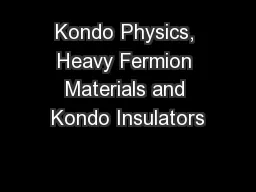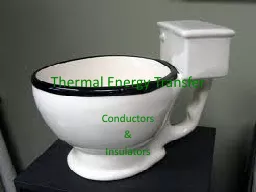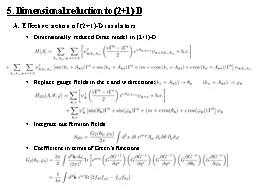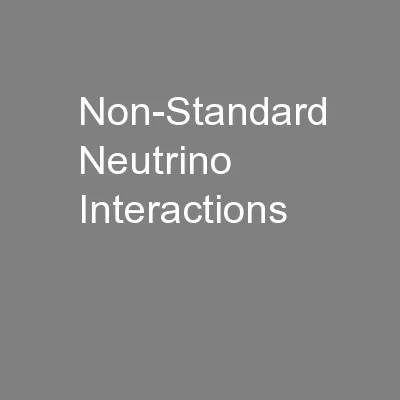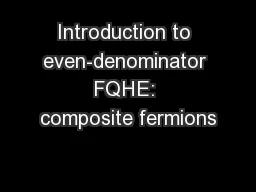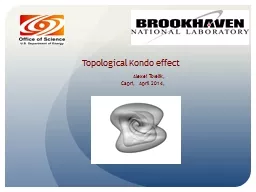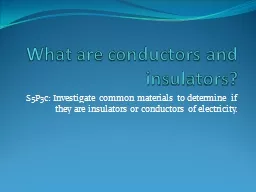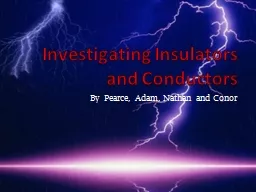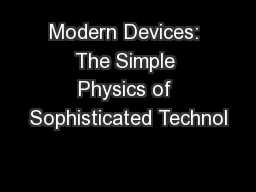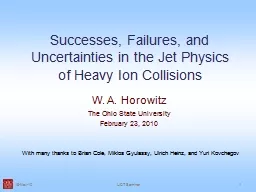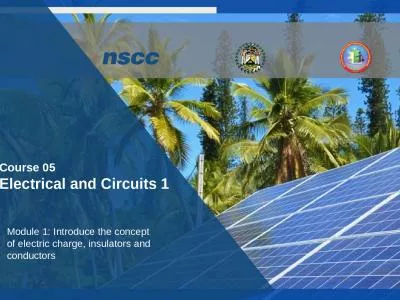PPT-Kondo Physics, Heavy Fermion Materials and Kondo Insulators
Author : calandra-battersby | Published Date : 2016-04-13
Z Fisk UC Irvine Zhejiang University April 12 2015 Outline some superconductivity history felectron physics heavy Fermion superconductivity some phenomenology of
Presentation Embed Code
Download Presentation
Download Presentation The PPT/PDF document "Kondo Physics, Heavy Fermion Materials a..." is the property of its rightful owner. Permission is granted to download and print the materials on this website for personal, non-commercial use only, and to display it on your personal computer provided you do not modify the materials and that you retain all copyright notices contained in the materials. By downloading content from our website, you accept the terms of this agreement.
Kondo Physics, Heavy Fermion Materials and Kondo Insulators: Transcript
Download Rules Of Document
"Kondo Physics, Heavy Fermion Materials and Kondo Insulators"The content belongs to its owner. You may download and print it for personal use, without modification, and keep all copyright notices. By downloading, you agree to these terms.
Related Documents

